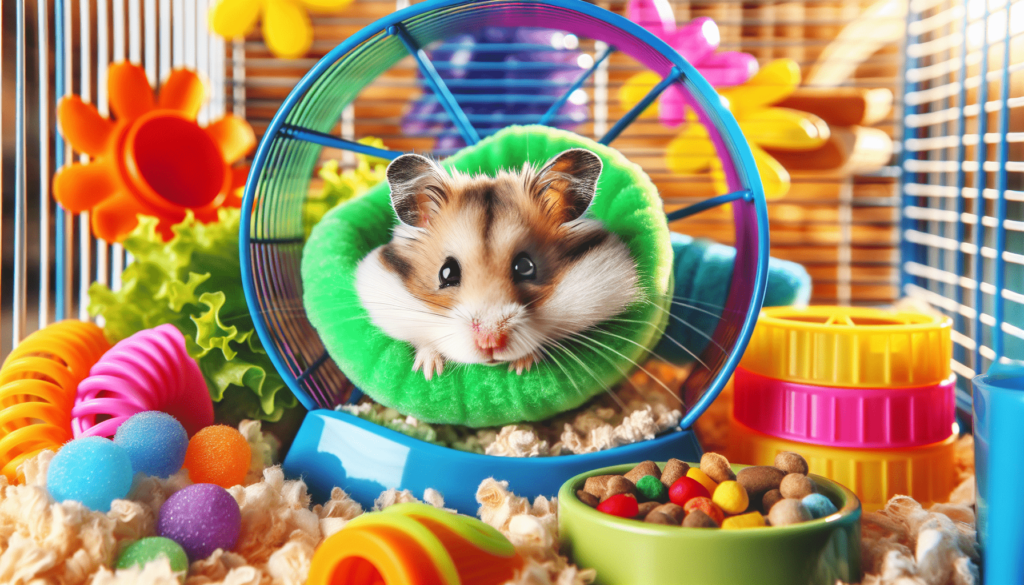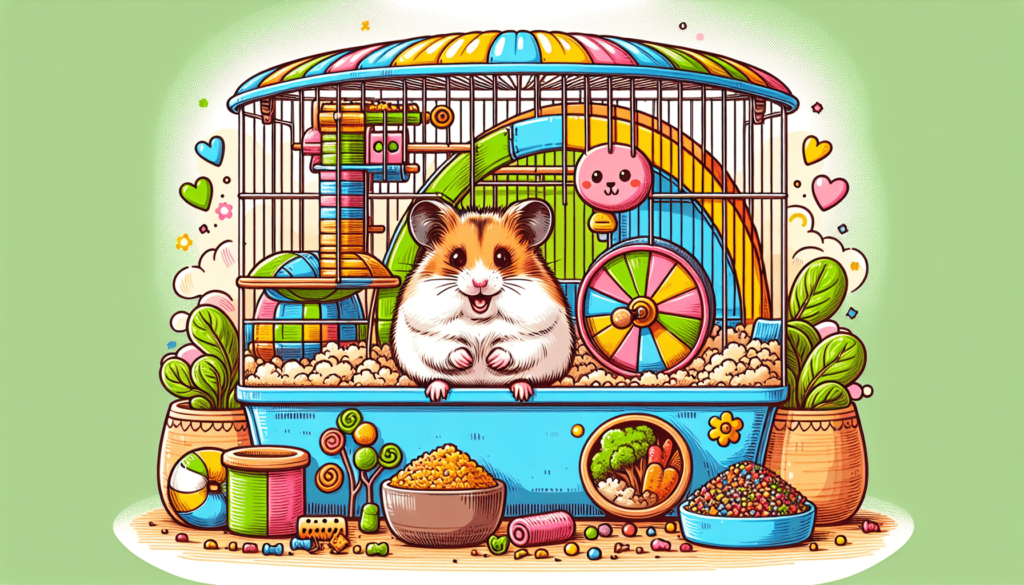Have you ever paused to wonder if your furry little friend is genuinely happy and healthy? Owning a hamster might seem straightforward, but there’s quite a bit to consider when it comes to ensuring they thrive in your care. Let’s chat about what you can do to make your home both a happy and healthy space for your beloved hamster chap!

Understanding Your Hamster’s Needs
Hamsters might seem like simple creatures, but they actually have plenty of specific needs that, when met, can enhance their well-being. Let’s break down what your little buddy might need in order to feel right at home.
Housing: Creating a Cozy Habitat
First things first, your hamster deserves a comfy cradle to call their own. Ideally, their cage should be spacious enough for them to explore. Think of their habitat as their little kingdom—what kind of castle would you want if you were a hamster?
Opt for a cage that’s at least 360 square inches of floor space. More space helps reduce stress and provides room for essential activities. Keep it well-ventilated but secure, so they don’t escape on an adventure without you noticing.
Bedding and Nesting Materials
Choosing the right bedding isn’t just about aesthetics. It’s about creating a soft, cozy, and absorbent environment. Avoid cedar or pine shavings, which can harm your hamster’s respiratory system. Instead, opt for aspen bedding or recycled paper-based options. They’re both safe and great for burrowing—a favorite hamster activity!
Nutrition: Feeding Your Hamster
Ever heard that saying, “You are what you eat”? Well, it’s pretty true for hamsters too! Nutrition plays a big part in keeping your hamster healthy, and not all foods are hamster-friendly.
Pellets and Seeds
Most commercial hamster foods are either pellets or seed mixes. Pellets are generally more balanced nutrition-wise, ensuring your hamster gets a bit of everything. On the flip side, seed mixes let your hamster pick favorites, which might lead to picky eating and nutritional imbalance. A mix of both is often ideal.
Fresh Foods
Who doesn’t love a bit of variety? Your hamster is no different! Supplement their diet with small portions of fresh veggies and fruits, like carrots, apples, or broccoli. Just be cautious—some foods, like citrus fruits, can upset their little tummies.
Foods to Avoid
There are a few things you should never let your hamster nibble on. Chocolate, caffeine, and onions, to name a few, can be toxic. Create a little mental blacklist so you keep hazardous foods out of reach.
Mental and Physical Stimulation
We’ve talked about food and housing, but what about keeping your little friend mentally and physically engaged? Bored hamsters aren’t happy hamsters!
Exercise Wheels and Balls
Exercise is not just a human thing! Your hamster benefits greatly from daily exercise, which can prevent health issues and help manage weight. Ensure their exercise wheel is a suitable size so they don’t arch their backs awkwardly while running. Got a hyper-hamster? Hamster balls are also a fun way for them to explore the world outside their cage safely.
Toys and Chewing Blocks
Hamsters’ teeth never stop growing, so providing them with plenty of things to chew on is crucial. From wooden chew toys to mineral blocks, these aren’t just for play, they’re a dental necessity as well.
Social Interaction
Though some hamster breeds are more solitary, they still need your attention. Spend time gently handling your hamster, let them explore outside the cage under your supervision, and talk to them now and then! Socialization can make a big difference in their overall happiness.
Health Monitoring: Keeping an Eye Out
A quick daily check-up is a great way to ensure your hamster stays in tip-top shape. Routine observation can help you catch issues early.
Signs of a Healthy Hamster
Your hamster should be bright-eyed and full of life. Their fur should be shiny and free of bald patches. An active hamster usually signals a healthy one, so take note of any abrupt changes in their level of activity.
Common Health Issues
Hamsters can suffer from various ailments like wet tail, a condition caused by stress and poor diet. Another common problem is respiratory infections, often caused by poor ventilation or unsuitable bedding. Familiarize yourself with symptoms like lethargy, sneezing, and diarrhea, and see a vet if anything seems off.

Creating a Routine
Hamsters appreciate predictability—it helps them feel secure.
Feeding and Cleaning Schedules
Set regular feeding times and clean their cage thoroughly once a week, spot-cleaning daily. Maintaining a routine minimizes stress and keeps your home smelling fresh.
Observation and Interaction Schedule
It’s wise to incorporate some hamster playtime and observation into your day. Maybe structure it around their natural nocturnal habits; a bit of interaction in the early morning or late evening when they’re more active works wonders.
Conclusion
Caring for a hamster doesn’t have to be a chore. It can be a rewarding and enjoyable experience when you know what clicks! After all, happy and healthy go hand in hand. By understanding your hamster’s needs, providing suitable nutrition, ensuring mental and physical stimulation, and keeping a watchful eye on their health, you’re on the path to making sure your little buddy enjoys a wonderful life in your home. So, how about a quick check—does your hamster already have everything they need to stay smiley and squeaky happy?
